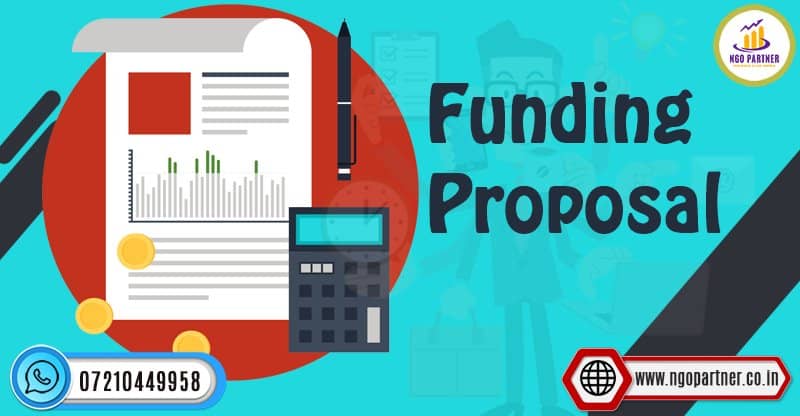
- June 19, 2023
- NGO Partner
- 1 Comment
- 502 Views
- 0 Likes
- Marketing Company Blogs
How to Write a Project Funding Proposal
Funding Proposal
Writing a winning project funding proposal requires a well-structured document that convinces the funder of your project’s value. Welcome to our blog post on creating an effective funding proposal. In this comprehensive guide, we will navigate the intricate landscape of funding proposals, equipping you with the knowledge and strategies to captivate potential funders and secure the resources you need. We will delve into the essential components of a winning proposal, explore the art of storytelling to ignite the interest of funders, and emphasize the importance of sustainability and impact. By the end of this journey, you will be equipped with the tools to transform your vision into a compelling narrative that commands the attention and support it deserves.
Let’s embark on this transformative voyage together, unlocking the power of funding and turning your ideas into reality.

Turning ideas into reality requires more than just inspiration; it demands the fuel of financial support. Funding is the lifeblood that breathes life into our aspirations, propelling them from mere concepts to tangible achievements. Whether you’re an entrepreneur with a groundbreaking startup, a nonprofit organization seeking to make a difference, or an individual with a transformative vision, securing funding is the key to bringing your dreams to fruition.
Understanding the Importance of a Funding Proposal
A funding proposal serves as a vital tool in the pursuit of financial support for your endeavors. In this section, we will explore its significance and shed light on why a well-crafted proposal is essential in securing the resources you need.
At its core, a funding proposal is a document that outlines your vision, goals, and plans for a project or initiative, presenting a compelling case to potential funders. It serves as a bridge between your ideas and the financial support necessary to turn them into reality. A thoughtfully constructed proposal not only demonstrates your understanding of the project but also showcases your commitment, credibility, and ability to deliver impactful results.
Crafting a well-structured and persuasive funding proposal is crucial because it serves as your voice to potential funders. It allows you to convey your passion, purpose, and the positive change your project aims to achieve. A strong proposal enables you to articulate the potential impact of your work and demonstrate how it aligns with the funder’s mission and values. It is the vehicle through which you can inspire and engage funders, capturing their attention and convincing them of the value in supporting your cause.
A clear and compelling funding proposal offers several benefits. Firstly, it enhances your credibility as a serious and organized individual or organization, instilling confidence in funders that their investment will be well-utilized. Secondly, it provides a structured framework to communicate your project’s objectives, activities, and anticipated outcomes, enabling funders to assess its feasibility and alignment with their funding priorities. Lastly, a well-crafted proposal differentiates you from other applicants, leaving a lasting impression on funders and increasing your chances of securing the funding you require.
Key Components of a Funding Proposal
To create an effective funding proposal, it is essential to understand the key components that comprise it. In this section, we will explore these components and highlight their significance in capturing the attention of funders. The executive summary serves as a concise overview of your project, providing a snapshot of its purpose, expected outcomes, and funding requirements. It serves as a hook to engage funders and entice them to read further.
The project description delves deeper into the details of your initiative, including its goals, methodology, and timeline. It should clearly articulate the problem your project addresses and the innovative solutions it proposes, demonstrating your understanding of the issue and the unique approach you bring. The budget section outlines the financial aspects of your project, detailing the anticipated costs, revenue sources, and budget justification. It is crucial to present a realistic and well-structured budget that aligns with the project’s scope and objectives, showing transparency and accountability.
The sustainability plan showcases how you plan to maintain the project’s impact beyond the funding period. It highlights your strategies for long-term sustainability, such as diversifying funding sources, building partnerships, or generating revenue streams. To effectively address each component, ensure clarity, conciseness, and alignment with the funder’s priorities. Tailor your proposal to the specific requirements and guidelines provided by the funder, showcasing your project’s unique value proposition and its potential to make a significant difference.
By understanding and optimizing these key components, you can increase the chances of creating a compelling funding proposal that resonates with funders, enabling you to secure the necessary resources to bring your vision to life.
Crafting a Compelling Narrative
In this section, we will explore the power of storytelling in a funding proposal and how it can create an emotional connection with funders. Crafting a compelling narrative is essential to capture the attention and imagination of potential funders, making your proposal stand out among others. Storytelling is a powerful tool that humanizes your proposal and allows funders to connect with the purpose and impact of your project on a deeper level. Start by defining the problem or issue your project aims to address, painting a vivid picture of the challenges and consequences involved. This helps funders understand the urgency and significance of your work.
Next, present a clear and innovative solution that showcases your project’s unique approach and potential for success. Illustrate how your solution aligns with the needs of the target community or beneficiaries and how it can create positive change. To make your narrative more impactful, incorporate real-life stories or case studies that demonstrate the transformative power of your work. Share personal anecdotes or testimonials from individuals who have been positively affected by similar initiatives. These stories add a human element to your proposal, allowing funders to connect emotionally and empathize with the potential beneficiaries.
While storytelling is important, it is equally crucial to support your narrative with data, evidence, and testimonials that strengthen the credibility of your proposal. Incorporate relevant statistics, research findings, or expert opinions to demonstrate the magnitude of the problem and the effectiveness of your proposed solution. Testimonials from partners, experts, or beneficiaries can further validate the feasibility and impact of your project.
Demonstrating Sustainability and Impact
A sustainable and impactful project is highly attractive to funders. In this section, we will discuss strategies for showcasing the long-term viability and scalability of your project, as well as highlighting its potential impact.
Demonstrate your project’s sustainability by outlining strategies for financial stability beyond the funding period. Discuss how you plan to diversify funding sources, establish partnerships, or generate revenue streams to ensure the project’s continued operation. Show funders that you have a comprehensive plan to secure resources and sustain the positive impact of your work.
To highlight the potential impact of your funded project, incorporate measurable outcomes and evaluation plans. Clearly define the short-term and long-term goals and outline specific indicators or benchmarks to track progress. Demonstrate your commitment to monitoring and evaluation, ensuring that the project’s impact can be accurately measured and reported.
Additionally, consider emphasizing potential collaborations with relevant stakeholders, such as community organizations, government agencies, or academic institutions. These partnerships not only enhance the credibility and reach of your project but also indicate a collective effort to address the identified problem and maximize impact.
By effectively crafting a compelling narrative and demonstrating sustainability and impact, you can enhance the appeal and persuasiveness of your funding proposal. Remember to engage funders through storytelling, support your claims with data and testimonials, and showcase a clear plan for sustainability and measurable outcomes. These elements will strengthen your proposal and increase your chances of securing the funding needed to turn your ideas into reality.
In conclusion, we have explored the essential elements of a well-crafted funding proposal. We discussed the importance of conveying your vision, goals, and impact effectively, as well as the significance of storytelling and demonstrating sustainability and impact. By summarizing the key points, it is evident that a carefully crafted funding proposal holds the key to turning ideas into reality. Now, armed with the insights and tips shared in this blog post, I encourage you to apply this knowledge and create your own compelling proposal. Believe in your ability to secure the necessary funding and bring your vision to life. With a persuasive proposal, you have the potential to make a lasting impact and transform your aspirations into tangible results. If you still have doubts related to this or need a project funding proposal from us feel free to contact us using our number below or by filling the contact form so that we can contact you.
Related: Power of CSR Funding: Driving Positive Change
Craft a proposal tailored to the funder. Highlight the problem, your solution, and measurable goals. Detail your team, budget, and how you’ll track success. Write clearly, use data, and proofread meticulously.
Here are 4 common project proposal types:
- Solicited: Responding to a formal request (RFP) outlining project needs.
- Unsolicited: Proposing a project idea without a prior request.
- Internal: Submitted within an organization to gain approval for resources.
- Renewal/Continuation: Seeking additional funding for ongoing projects.




I really like reading through a post that can make men and women think. Also, thank you for allowing me to comment!